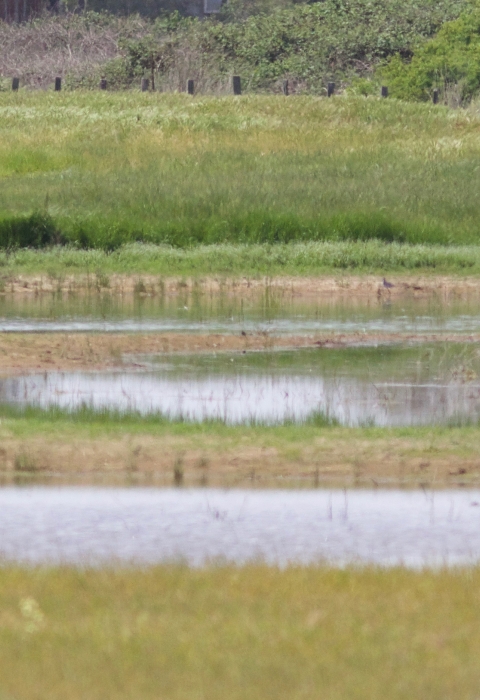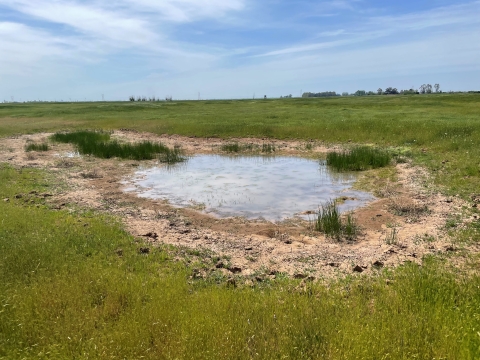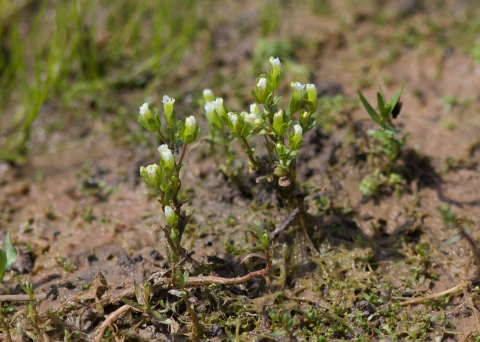Definition of riparian habitat or riparian areas.
Learn more about riparian wetlands.
In early April, Sacramento Fish and Wildlife Office senior biologists, Nora Papian and Stephanie Jentsch, visited the Markham Ravine restoration project in Placer County, California to view recently restored vernal pools. Over the past four years, Westervelt Ecological Services, in partnership with the Placer County Conservation Program, has been restoring the property from irrigated pastureland to native vernal pool grasslands and riparian wetlands.
Vernal pools, and the species that call them home, have disappeared from much of California due to intensive agricultural practices, land development and invasive species invasive species
An invasive species is any plant or animal that has spread or been introduced into a new area where they are, or could, cause harm to the environment, economy, or human, animal, or plant health. Their unwelcome presence can destroy ecosystems and cost millions of dollars.
Learn more about invasive species .
“Vernal pools are unique ecosystems that support a wide range of plant and animal species that are adapted to California’s wet and dry cycles. Efforts like this restoration project are helping to recover listed and at-risk species,” said Jentsch.
Part of the restoration effort included sowing vernal pools with soil that contained Boggs Lake Hedge-hyssop seeds and federally threatened vernal pool fairy shrimp cysts. While the plant is not federally protected, it is listed as endangered by the state of California.
"This area was identified as a good seeding location for the hedge-hyssop because it’s within the plant’s historic range and it has the right soil type and precipitation levels," said Papian.
During the visit, the biologists were pleased to see that the plant successfully grew from seed and flowered in several vernal pools despite low rainfall this winter. A population count has not yet been completed, but biologists are hopeful that the Boggs Lake hedge-hyssop can successfully establish at the reserve.
"From this effort, we learned that establishing new populations of hedge-hyssop from seed is possible,” said Papian. “This project also demonstrates that native plant seed collection and distribution in the proper locations can be an important part of recovering listed and at-risk plants.”
In addition to the success seen with the plant, surveys conducted over the winter found vernal pool fairy shrimp in several pools at the site. The presence of the tiny, freshwater crustacean in the restored pools suggests that the site can again provide habitat for fairy shrimp and other vernal pool plant and animal species.
The SFWO will continue to coordinate with Westervelt and the Placer County Conservation Program in the management of this and future sites that help offset development impacts on species and their habitat in Western Placer County.
"We are grateful for the partnership with the Placer County Conservation Program and Westervelt to restore this site to vernal pool grassland and recover species that depend on this habitat,” said Jentsch. “This is a great achievement, and we're looking forward to seeing even more success with these partners in the coming years."





